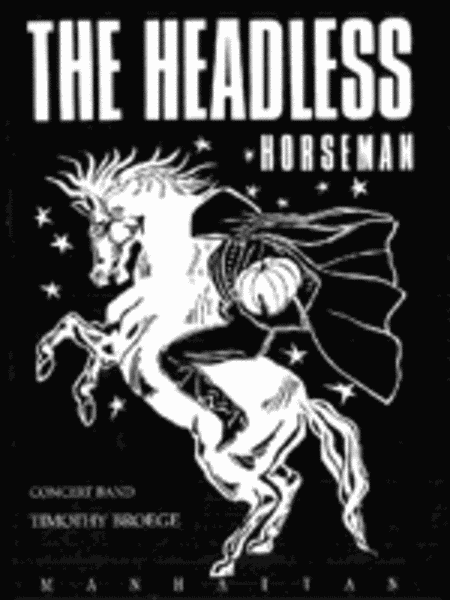The Headless Horseman
-
Ships in 4 to 6 weeks
Details
Description
SKU: MH.0-931329-26-4
Composed by Timothy Broege. Suitable for middle school and high school bands. Conductor Full Score. Duration 2:00. Published by Manhattan Beach Music (MH.0-931329-26-4).ISBN 9780931329265.
The music of Broege is like the music of Mozart - unmistakably his own, incapable of imitation, and a constant source of delight. Of course, The Headless Horseman is up to no good, and Broege knows it in this delightful depiction of the spooky legend. Composed in June 1973, The Headless Horseman was first performed in July 1973 by the Manasquan (New Jersey) Summer School Concert Band. The score was subsequently revised and engraved in 1980 under the personal supervision of Mr. John D. Forbes, master engraver and editor. This short piece compresses a fair amount of material into a brief time span. The nine-bar introduction, Adagio misterioso, sets the stage for the entry of Washington Irving's Headless Horseman, described so vividly in the classic short story, "The Legend of Sleepy Hollow," and given further life in classic animated films by Walt Disney and Ub Iwerks. The dissonant "howl" in bars 8-9 may be the fearsome whinnying of the stallion on which the Horseman rides forth to snatch the souls of the unsuspecting. From measure 10, the frightening ride is under way. "Beware, beware!" warn the low brass in bars 14 and 15. The miniature chorale in bars 26-32 pleads desperately for salvation, but there is no hope. The Horseman resumes his charge in bar 33, gathers up his harvest of souls in bars 36-38, and rides off into the night. The opening Adagio misterioso should be slow and fearsome, even slower than quarter note equals 60, if possible. The lung power of the trombone section will most likely be the determining factor here. The Allegro should not rush: the eighth notes in bar 10 must be precisely articulated, with complete ensemble unanimity. Care must be taken that the pitches in bars 14 and 15 are in tune, and that the intervals are carefully judged. If available, temple blocks may be substituted for the woodblock in bars 42-45. Please observe passages marked "solo" -- one player only, thank you. Some younger players (and some audience members) have been frightened by the opening bars -- Good! There is drama and excitement in this brief musical ride, so let the faint-hearted pass it by. Ensemble instrumentation: 4 Flute I, 5 Flute II, Oboe, 4 Bb Clarinet I, 8 Bb Clarinet II and III, 2 Bb Bass Clarinet, 2 Eb Alto Saxophone I, 2 Eb Alto Saxophone II, 1 Eb Baritone Saxophone, 3 Bb Trumpet I, 3 Bb Trumpet II, 3 Bb Trumpet III, 4 F Horn, 2 Trombone I, 2 Trombone II, 4 Bb Baritone Horn T.C. (& Bb Tenor Saxophone), 2 Bb Baritone Horn B.C., 5 Bass (& Bassoon), 5 Percussion.

 Share
Share